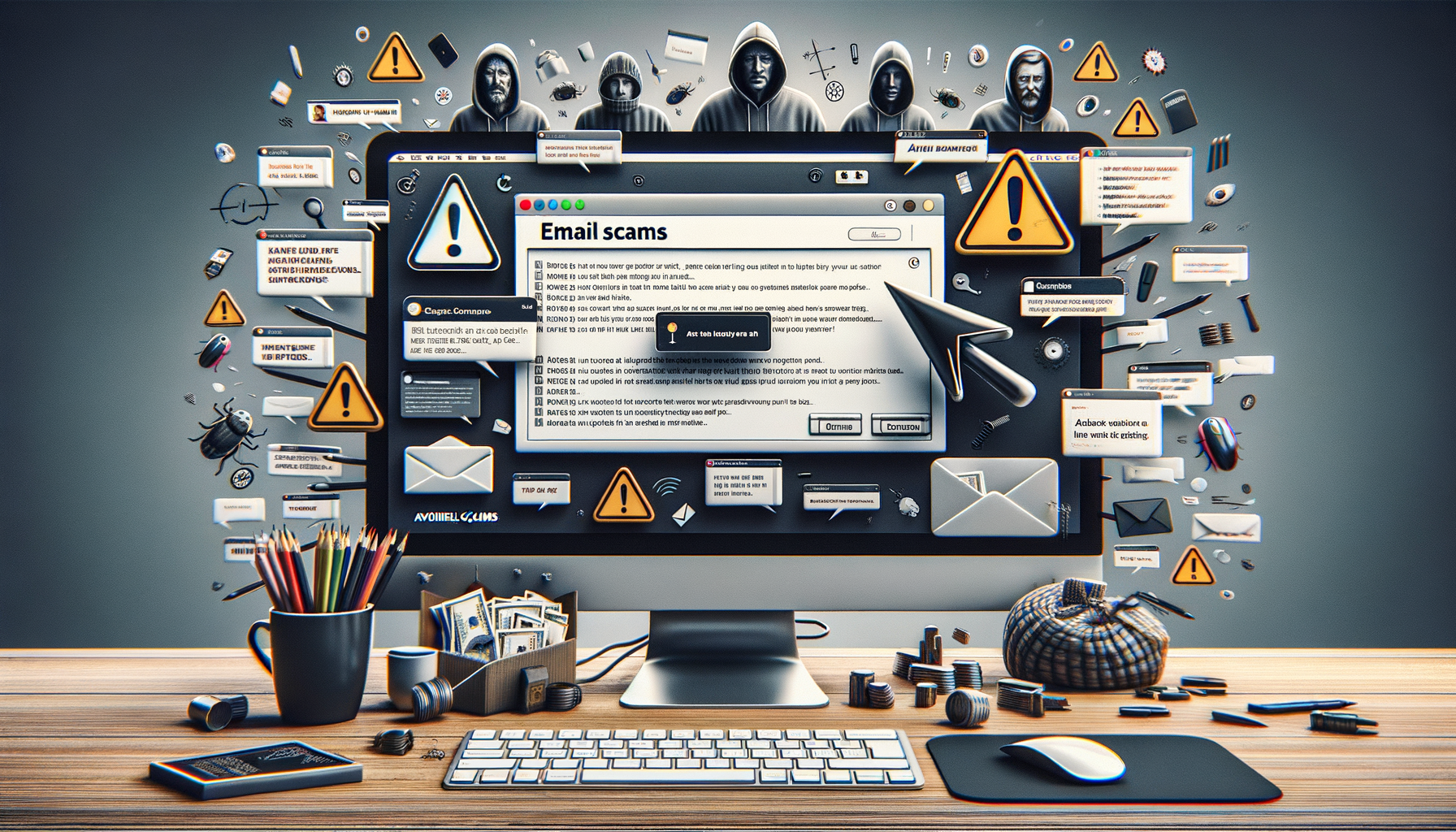Understanding the Anatomy of a Scam Email
Scam emails have become increasingly sophisticated, making it crucial to understand their anatomy to protect oneself from potential threats. At their core, scam emails are designed to deceive recipients into providing personal information or money. They often masquerade as legitimate communications from trusted entities such as banks, government agencies, or well-known companies. The key to identifying them lies in recognizing certain telltale signs.
One common feature of scam emails is the use of generic greetings. Instead of addressing you by name, they might start with a vague “Dear Customer” or “Hello User.” This lack of personalization is a red flag, as legitimate organizations usually have your details on file and will address you directly. Additionally, scam emails often contain spelling and grammar mistakes. While not all scam emails are poorly written, many contain errors that a professional organization would likely avoid.
Another hallmark of scam emails is the sense of urgency they create. Phrases like “Act Now,” “Urgent Action Required,” or “Your Account Will Be Closed” are designed to panic recipients into making hasty decisions. This tactic exploits the fear of missing out or facing negative consequences, prompting individuals to click on links or download attachments without thinking.
Moreover, scam emails frequently include suspicious links or attachments. These links may lead to phishing sites designed to steal your login credentials, while attachments could contain malware. Always hover over links to check their destination before clicking, and be wary of any unexpected attachments, especially if they come from unknown sources.
By understanding these common elements, you can better equip yourself to spot scam emails and protect your personal information from falling into the wrong hands.
Recognizing Common Red-Flag Phrases
Spotting a scam email often boils down to recognizing common red-flag phrases that scammers use to lure victims. These phrases are crafted to manipulate emotions and prompt quick reactions. By familiarizing yourself with these phrases, you can better protect yourself from potential scams.
One frequently used phrase is “Verify Your Account.” Scammers use this to trick recipients into providing login details under the guise of security checks. Legitimate companies will rarely ask for sensitive information via email, so this should raise immediate suspicion. Similarly, phrases like “You Have Won” or “Congratulations, You’ve Been Selected” are classic hooks used in lottery or prize scams. Remember, if it seems too good to be true, it probably is.
An urgent tone is another common tactic. Phrases such as “Immediate Action Required” or “Your Account Will Be Suspended” are designed to create panic and prompt hasty decisions. Scammers rely on this urgency to bypass your usual caution and have you click on malicious links or provide personal information without second thoughts.
Additionally, be wary of emails that promise financial gain or threaten negative consequences. Phrases like “You Will Lose Access” or “Your Payment Is Overdue” are intended to scare recipients into compliance. Legitimate organizations will provide ample notice and multiple communication methods before taking such actions.
By staying vigilant and questioning these red-flag phrases, you can avoid falling victim to email scams. Always take a moment to verify the legitimacy of the email with the supposed sender through official channels before taking any action.
Examining Email Addresses and Domains
One of the simplest yet most effective ways to identify a scam email is by examining the sender’s email address and domain. Scammers often use email addresses that mimic legitimate ones, but upon closer inspection, they reveal subtle differences that can expose their fraudulent nature.
Start by closely examining the sender’s email address. Scammers may use addresses that appear similar to those of reputable companies, but often include extra characters or misspellings. For example, an email from a bank might come from an address like “support@bank.com,” but a scam email might use “support@b4nk.com” or “support.bank@gmail.com.” These minor alterations are easy to overlook if you’re not paying attention.
Additionally, be wary of generic domains such as “@gmail.com” or “@yahoo.com” when receiving emails from supposed companies or organizations. Legitimate businesses typically use their own domain names for email communication. If an email claiming to be from a well-known company arrives from a free email service, it’s a red flag.
Another tactic used by scammers is spoofing, where they disguise their email address to appear as though it comes from a legitimate source. While more sophisticated, this technique can often be spotted by checking the email headers for inconsistencies. Most email clients allow you to view the full email headers, which reveal the true origin of the message.
By taking the time to scrutinize email addresses and domains, you can often catch scams before they have a chance to deceive you. This simple step is a crucial part of maintaining your online security.
Evaluating the Email’s Content and Tone
The content and tone of an email can provide significant clues about its legitimacy. Scam emails often have a certain tone and style that differs from genuine communications. By evaluating these aspects, you can better identify potential scams.
Scam emails frequently employ a sense of urgency or threat. They might threaten account suspension, legal action, or financial loss if you do not respond immediately. This tactic is designed to provoke anxiety and compel you to act without thinking. Genuine organizations typically avoid such aggressive language and provide a reasonable timeframe for any required actions.
Another characteristic of scam emails is their lack of personalization. While legitimate companies often address you by name and reference specific information, scam emails tend to use generic greetings and lack personal details. This is because scammers usually send mass emails to a large number of recipients, hoping to catch a few off guard.
Additionally, pay attention to the overall quality of the writing. Scam emails often contain spelling and grammatical errors, awkward phrasing, or inconsistent formatting. While not all scam emails are poorly written, these errors can be a sign of a fraudulent message.
Finally, consider the plausibility of the email’s claims. If an email promises something that seems too good to be true, such as a large sum of money or a fantastic prize, it’s likely a scam. Similarly, if an email asks for sensitive information like passwords or credit card numbers, be cautious. Legitimate companies rarely request such information via email.
By critically evaluating the content and tone of an email, you can better protect yourself from scams and maintain your online security.
Steps to Take If You Suspect a Scam
If you suspect that an email might be a scam, there are several steps you can take to protect yourself and prevent further attempts. Taking these precautions can safeguard your personal information and minimize the risk of falling victim to scams.
First, do not click on any links or download attachments from the suspicious email. These could lead to phishing sites designed to steal your information or contain malware that can infect your device. Instead, try to verify the email’s legitimacy by contacting the supposed sender through official channels. Use contact information from the company’s official website, not the details provided in the email.
If the email claims to be from a company you do business with, log into your account directly from the company’s website to check for any notifications or messages. This can help confirm whether the email is genuine or a scam.
Additionally, report the suspicious email to your email provider and the organization it claims to represent. Most companies have dedicated teams to handle phishing attempts and can take action to prevent further scams. Reporting the email also helps protect other potential victims.
Consider enabling additional security measures for your email account, such as two-factor authentication, to add an extra layer of protection. Regularly update your passwords and use strong, unique passwords for different accounts to reduce the risk of unauthorized access.
By following these steps, you can effectively deal with suspected scam emails and enhance your overall online security. Staying vigilant and proactive is key to protecting yourself from potential threats.




Leave a Reply